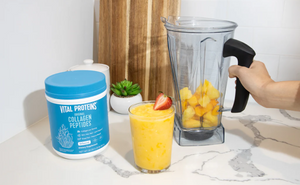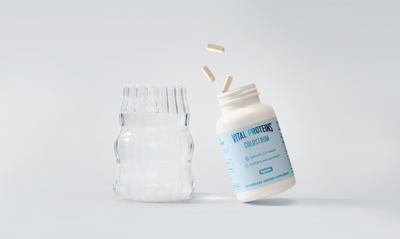Ask any fitness expert you know and they’ll tell you the core is complex. It’s so much more than the toned midsection you see influencers flaunting on your Instagram feed. The core is actually made up a complex set of muscle groups, such as the rectus abdominis (what makes up the six-pack abs you might think when you think core), transverse abdominis, inner and outer obliques (side muscles), and your quadratus lumborum and multifidus (lower-back muscles).
Your core is utilized in nearly every type of exercise you’re doing. This is why your fitness goals should include a strong core and not focus on aesthetics. Having a strong core can help you lift heavier, run faster or be more stable in the saddle during your indoor cycling class. And, if you’ve ever taken a workout class or worked with a trainer, you’ve likely heard them say “engage your core,” in relation to performing certain exercises. But what does that mean exactly? And how is it done? For answers to this, we turned to the fitness experts to get to the core of it.

Why do you need to engage your core during workouts?
When it comes to fitness, there is a right way and a wrong way to do things. For instance, a right way would be to warm up before exercising. This helps to prepare the muscles for the work ahead and helps prevent injury. You should also always work with a trainer to ensure each move you do is with proper form.
A wrong way would be to not engage your core during exercises, such as during a plank or while holding a difficult pose in yoga class. That’s because the core is the center of your body.
“Your core is responsible for balance, stability and strength,” says Kyle Risley, Founder & CEO of Lift Vaultand powerlifter. A strong core does a lot more than just look good in a bathing suit. It’s also responsible for keeping your workouts safer and more effective, says Justin Meissner, an NASM-certified trainer and certified mobility specialist. For example, if you’re squatting, “your core transfers the force of the weight so that your lower leg muscles can do the majority of the lifting.”
Related Articles
Should you do a core warmup?
Warming up before a workout is always a worthy use of your time. Whether you’re running around the block or doing dynamic stretches, a good warm up raises your body’s temperature and increases blood flow to your muscles. This reduces your risk of injury and muscle soreness. Meissner says that the warmup shouldn’t be limited to just certain exercises.
“Remember the core is around the body, not just the stomach,” Meissner says. He recommends adding a plank or some crunches to your warm up as a great way to get the core muscle ready. Another option is a single side lat pulldown with a resistance band or doing a few prone super mans. “This would engage a lot of the back muscles as well, which is ideal since the muscles are so connected,” Meissner says.
How do I know if I’m engaging my core?
In addition to trainers telling you to engage your core, you may have heard them tell you to “pull your belly button into your spine.” But, according to Sharon Gam, a certified personal trainer and health coach and owner of Sharon Gam Fitness, there’s a better way.
“Pulling your abs in doesn’t activate them properly and it doesn’t support your back and spine, which is the whole point of core activation,” Gam explains. Instead, think about bracing the muscles of the core (as if you’re about to get hit in the stomach and you’re tensing up to absorb the blow).
You should feel the muscles of your stomach constrict as you do this. Another trick is to press your fingers into your activated stomach, so you can feel the muscles contract and your core tense and stiffen.
“That’s what stabilizes and protects your midsection,” Gam tells Lively. Once you get the hang of this, it’s all about putting the activation into practice. This could look like taking a moment to run-through these exercises before attempting another rep of exercise, or simply being mindful of it.
How do I engage my core during exercise?
Now that you know what engaging your core feels like, it’s time to put it all into practice! Since you won’t always want to brace the stomach abruptly as if preparing for a punch, there are other tactics that can help.
One involves a series of cues that are easy to practice, so it’s easier to become a habit. For this, there are three movements, according to Risley: tuck your ribs in, place the shoulders down, and lift your hips up.
“Doing these two things will help you activate the muscles in your core that are so important for keeping a strong base for any work you do,” Risley explains. Be sure to pair these cues with diaphragmatic breathing (breathing that fills the stomach with air), as this is an important part of core activation. While many exercises can benefit from some good core stabilization, the emphasis is on workouts that require stability, like leg lifts and core exercises.
Vital Note: This article has been made available for informational and educational purposes only. It is not intended to be a substitute for professional medical advice, diagnosis, or treatment. Always seek the advice of your physician or another qualified health provider with any questions you may have regarding a medical condition. Your licensed healthcare professional can best provide you with the diagnosis and treatment of any medical condition and assist you as well in deciding whether a dietary supplement will be a helpful addition to your regimen.














